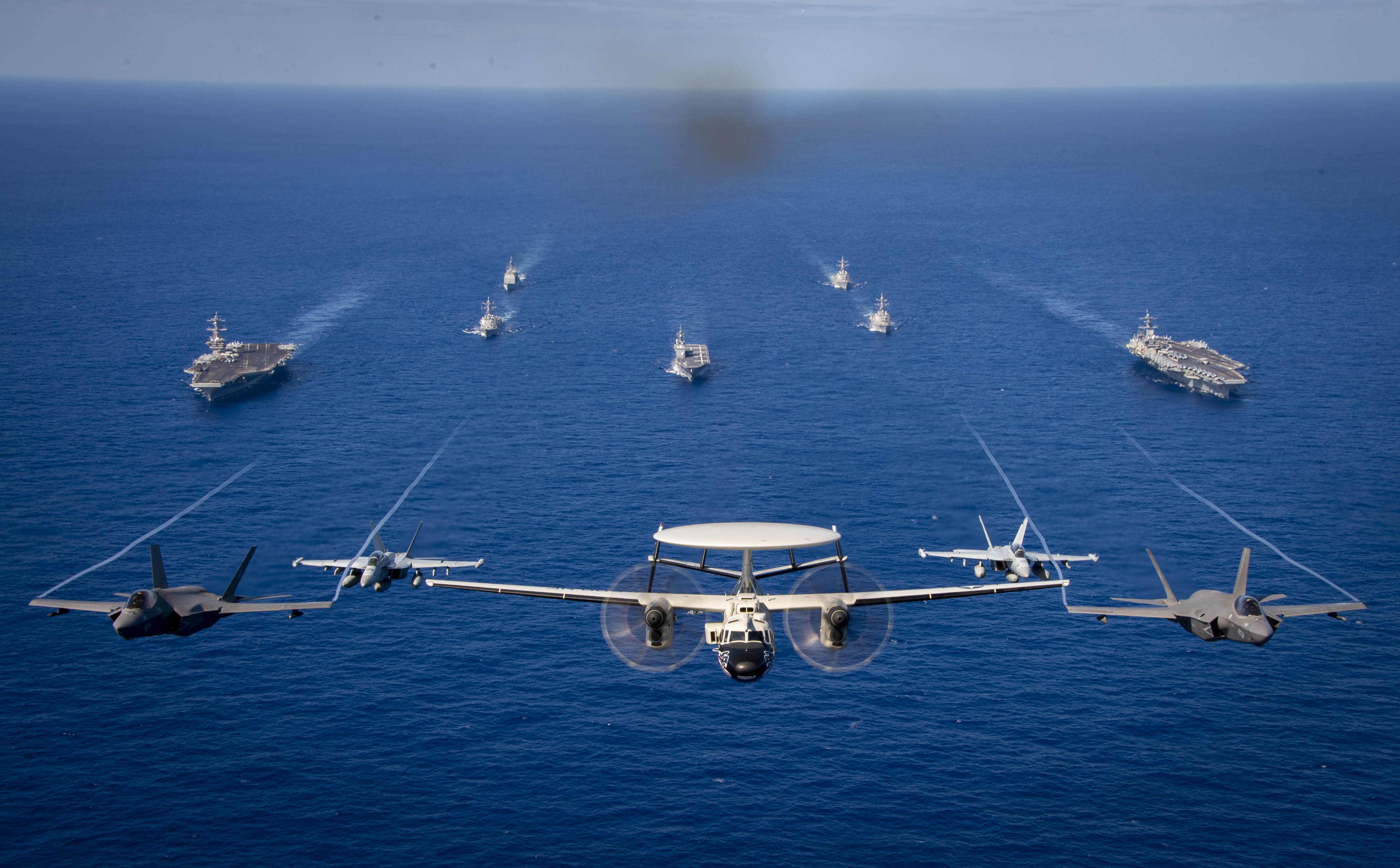The following is the June 27, 2024, Congressional Research Service report, Navy Large Unmanned Surface and Undersea Vehicles: Background and Issues for Congress.
From the report
Among the Navy’s programs for developing and acquiring unmanned surface vehicles (USVs) and unmanned underwater vehicles (UUVs) of various sizes are programs for developing two large USVs—the Large Unmanned Surface Vehicle (LUSV) and Medium Unmanned Surface Vehicle (MUSV)—and a program for a large UUV called the Extra-Large Unmanned Undersea Vehicle (XLUUV), also known as Orca. The Navy wants to develop and acquire LUSVs, MUSVs, and XLUUVs as part of an effort to shift the Navy to a more distributed fleet architecture, meaning a mix of ships that spreads the Navy’s capabilities over an increased number of platforms and avoids concentrating a large portion of the fleet’s overall capability into a relatively small number of high-value ships (i.e., a mix of ships that avoids “putting too many eggs into one basket”). The Navy’s proposed FY2025 budget requests $54.0 million in research and development (R&D) funding for the LUSV program, $101.8 million in R&D funding for the MUSV program, $92.9 million in R&D funding for LUSV/MUSV enabling capabilities, $21.5 million in R&D funding for the XLUUV program, and $68.2 million in additional R&D funding for core technologies for UUVs including but not limited to XLUUV.
LUSV. The Navy envisions LUSVs as being 200 feet to 300 feet in length and having full load displacements of 1,000 tons to 2,000 tons, which would make them the size of a corvette (i.e., a ship larger than a patrol craft and smaller than a frigate). The Navy wants LUSVs to be low-cost, high-endurance, reconfigurable ships with ample capacity for carrying various modular payloads—particularly anti-surface warfare (ASuW) and strike payloads, meaning principally anti-ship and land-attack missiles. Each LUSV could be equipped with a vertical launch system (VLS) with 16 to 32 missile-launching tubes. Although referred to as unmanned vehicles, LUSVs might be more accurately described as optionally or lightly manned ships, because they might sometimes have a few onboard crew members, particularly in the nearer term as the Navy works out LUSV enabling technologies and operational concepts. The Navy has been using LUSV prototypes to develop LUSV operational concepts. The Navy’s FY2025 budget submission programs the procurement of production LUSVs through the Navy’s shipbuilding account, with the first LUSV to be procured in FY2027 at an estimated cost of $497.6 million, the next two in FY2028 at a combined estimated cost of $652.8 million (i.e., an average of about $326.4 million each), and the next three in FY2029 at a combined estimated cost of $994.3 million (i.e., an average of $331.4 million each). Under the Navy’s FY2024 budget submission, procurement of LUSVs was to begin two years earlier, in FY2025. The Navy states: “This necessary [two-year] delay reduces risk associated with concurrency in requirements development, design specifications and machinery reliability testing.”
MUSV. The Navy defines MUSVs as being less than 200 feet in length, with displacements of less than 500 tons, which would make them the size of a patrol craft. The Navy wants MUSVs, like LUSVs, to be low-cost, high-endurance, reconfigurable ships that can accommodate various payloads. Initial payloads for MUSVs are to be systems for supporting Intelligence, Surveillance, Reconnaissance, and Targeting (ISR-&T), Counter-ISR&T, and Information Operations (IO) missions. The Navy’s FY2025 budget submission does not program the procurement of any operational MUSVs during the period FY2025-FY2029. The submission states: “The prototyping efforts with the FY 2019 MUSV hardware and software will inform decisions in preparation for the transition to an ACAT [acquisition category] program. Formalized requirements [for MUSV] will be defined through a Capability Development Document [CDD] and procurement funding will be developed as part of a decision in future budgets.”
XLUUV. XLUUVs are roughly the size of a subway car. The Navy wants to use XLUUVs to, among other things, covertly deploy the Hammerhead mine, a planned mine that would be tethered to the seabed and armed with an antisubmarine torpedo, broadly similar to the Navy’s Cold War-era CAPTOR (encapsulated torpedo) mine. Five “operationally relevant prototype” XLUUVs were procured in FY2019. An additional XLUUV test and training asset has also been procured. The Navy’s FY2025 budget submission programs the procurement of additional XLUUVs through the Other Procurement, Navy (OPN) account, at a rate of one per year in FY2026-FY2029, with estimated procurement costs of $113.3 million, $115.6 million, $117.9 million, and $120.4 million, respectively. The Navy’s FY2025 budget submission states: “Testing and delivery of the vehicles and support elements has been delayed to FY23-25 due to contractor challenges and supplier issues. The Navy is working with Boeing to mitigate schedule delays and execute risk reduction testing which initiated in FY23 through the addition of a designated test and training asset (Vehicle 0).… Fabrication awards of additional Orca XLUUV systems are planned for FY26 and out, gradually ramping up quantities in future fiscal years, depending on the progress from the first five systems.”
Download the document here.





